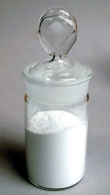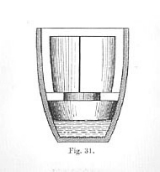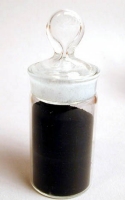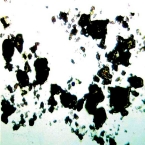Lead white is one of the most well known and used pigments throughout history. It is discussed at length in ancient manuscripts and its origin as a pigment derived from lead is richly documented. However, the average person is unaware of how lead white pigment is made. Unless a person participates in the sport of fishing where lead weights are normally used to make the tackle sink. most people do not come into contact with the silver-gray metal that is the starting point for making this brilliant white pigment.
Lead must be transformed into a fine, dense, opaque white pigment by a chemical process. Today the pigment is only sold to artists and for industrial purposes. The largest use of lead today is for storage batteries as commonly found in automobiles. So how does one turn grey metal into white powder?
The modern processing of lead is a highly technical and relatively speedy process that transforms lead into pigment. In earlier times, the work required to turn lead into pigment was deceptively straightforward and required only a few materials at hand to make the transformation. Despite the appearance of simplicity, a complex chemical reaction took place to change lead into pigment.




